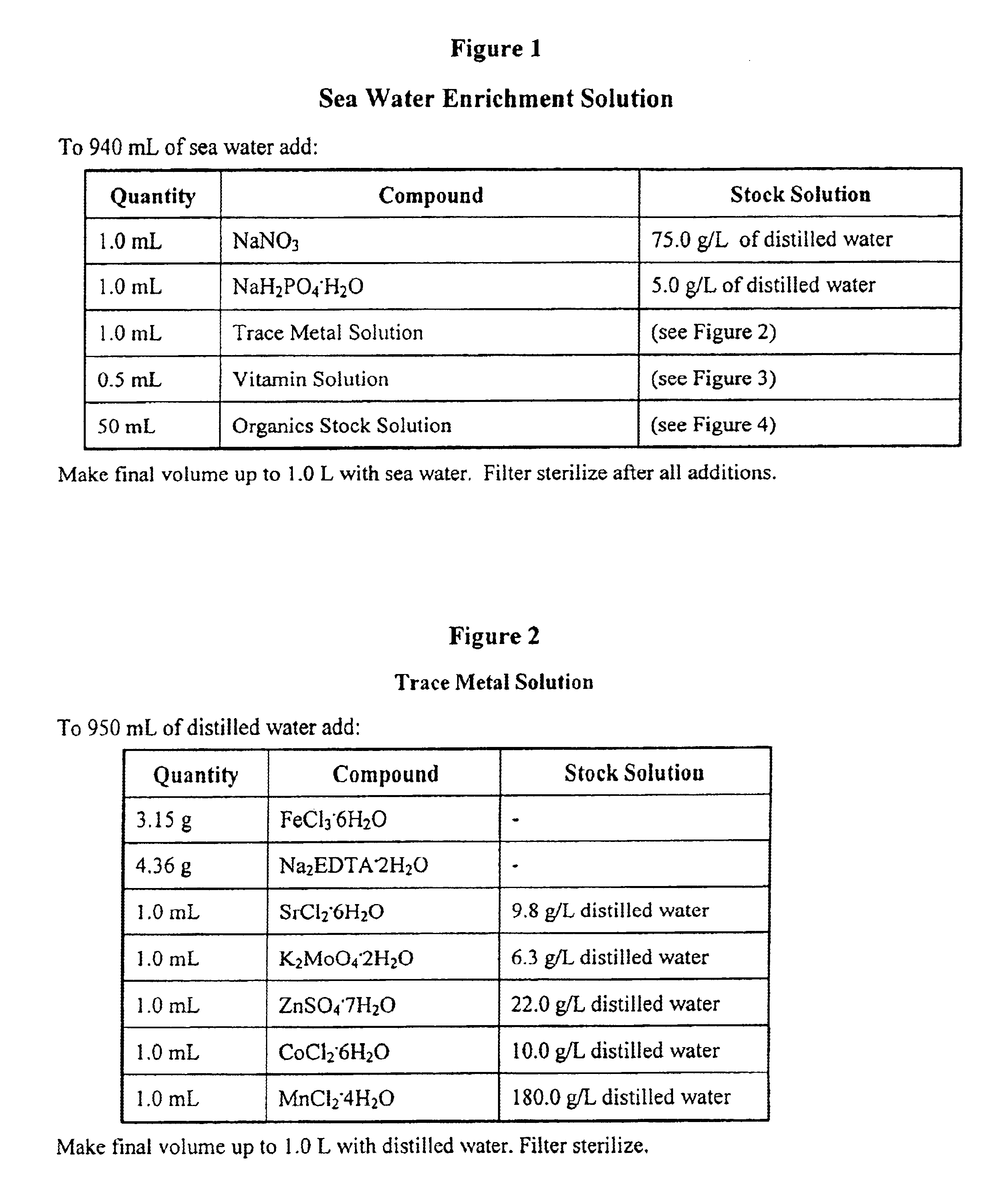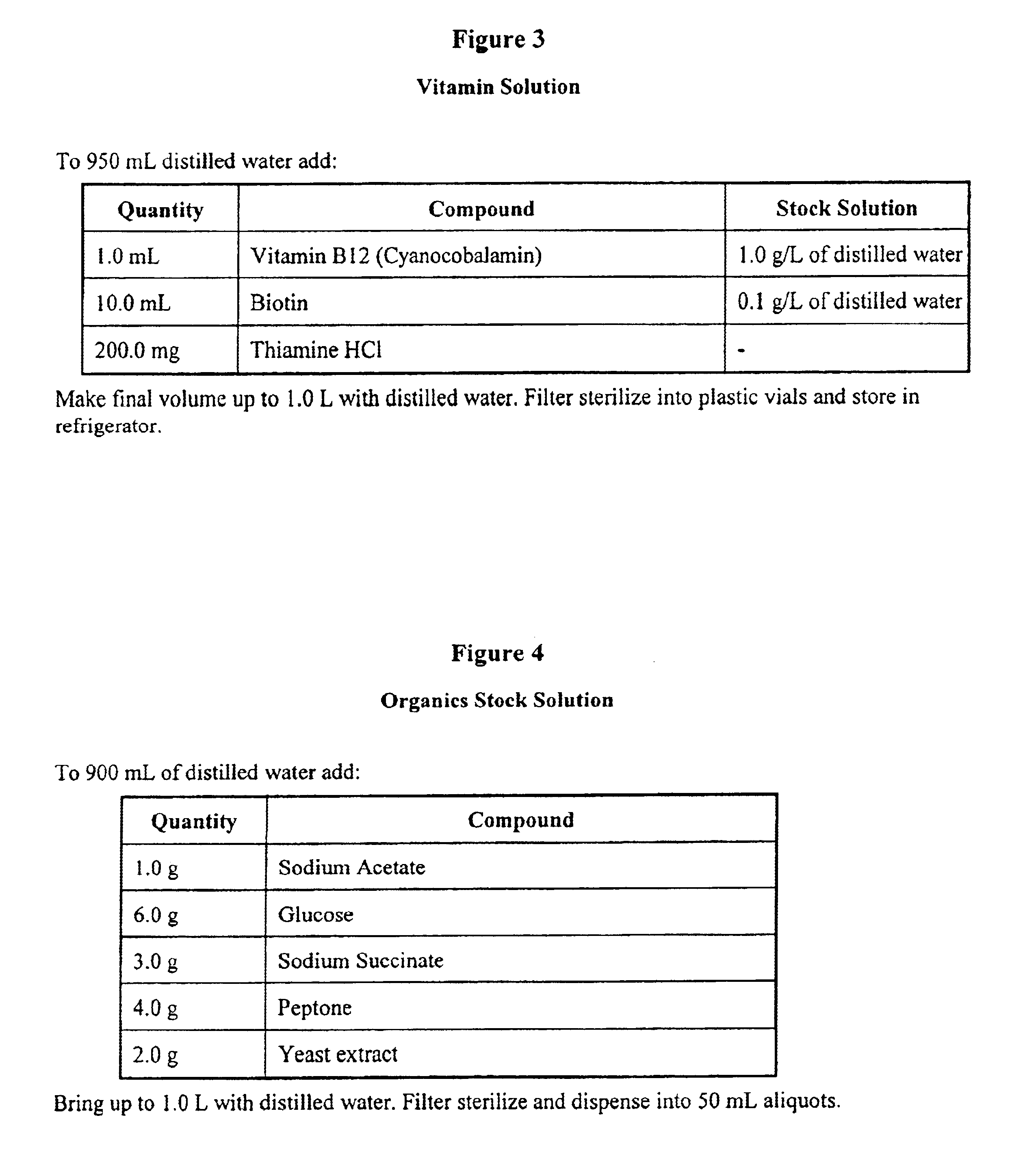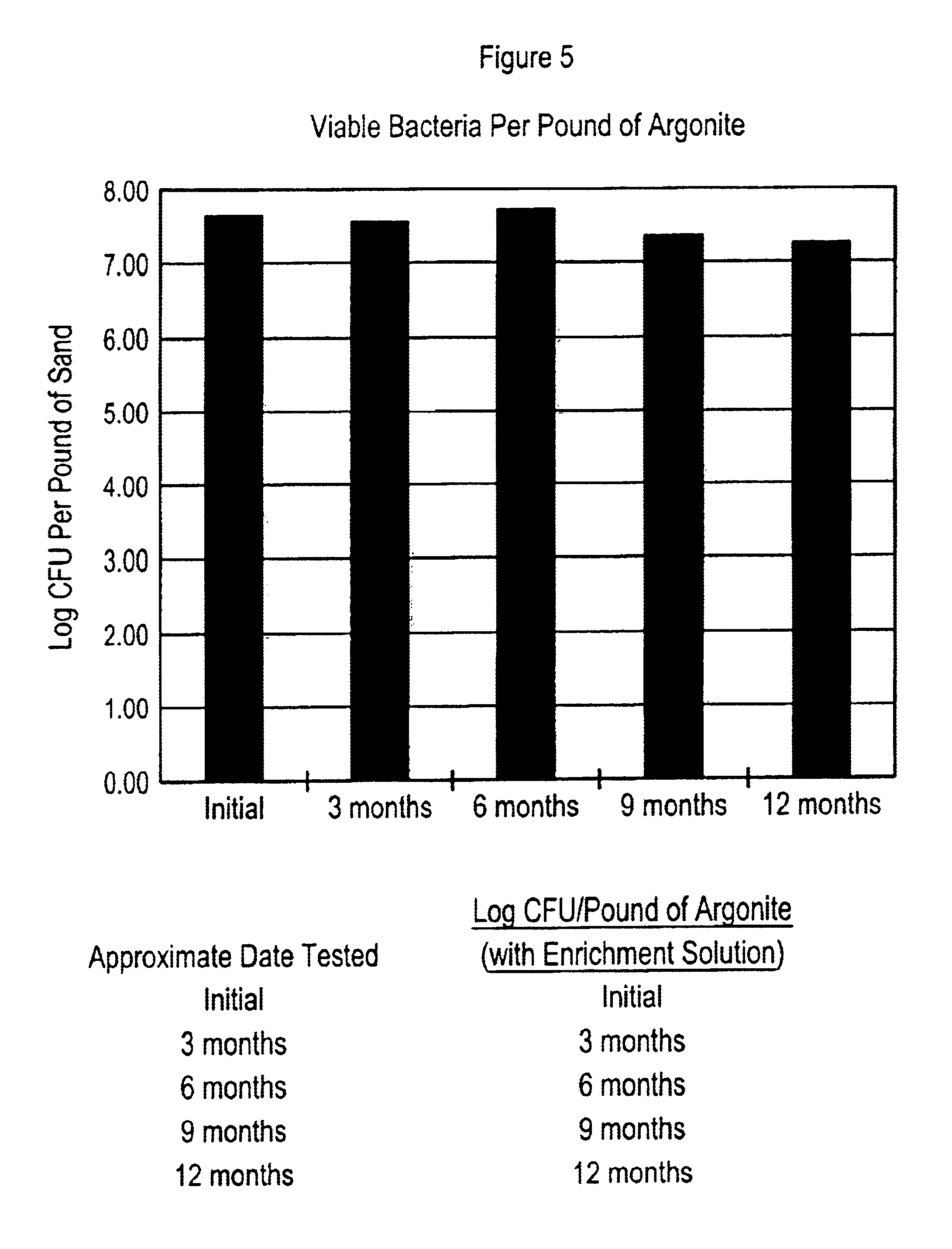Method of rapid bio-cycling of an aquarium
- Summary
- Abstract
- Description
- Claims
- Application Information
AI Technical Summary
Benefits of technology
Problems solved by technology
Method used
Image
Examples
Embodiment Construction
[0039]According to a first aspect of the present invention there is disclosed a method for rapid cycling an aquarium using preserved saltwater marine microorganisms, harvested from a natural marine environment, by introduction into an aquarium environment to facilitate rapid biochemical cycling. As used herein the term “marine microorganisms” and / or “microorganisms” shall mean aquatic bacteria naturally found in saltwater environments. Specifically, the method provides for the harvesting materials that are naturally rich with bacteria, such as sand, shells, aragonite, crushed coral materials, river rocks and pebbles and the like, harvested from submerged marine and / or river environments, and packaging the harvested materials in specifically sized sealed containers, suitable for storage at room temperature and retail sale, such that marine bacteria are preserved in their natural habitat—in biofilms attached to the granular surfaces—for extended periods of time. The method provides th...
PUM
 Login to View More
Login to View More Abstract
Description
Claims
Application Information
 Login to View More
Login to View More - R&D
- Intellectual Property
- Life Sciences
- Materials
- Tech Scout
- Unparalleled Data Quality
- Higher Quality Content
- 60% Fewer Hallucinations
Browse by: Latest US Patents, China's latest patents, Technical Efficacy Thesaurus, Application Domain, Technology Topic, Popular Technical Reports.
© 2025 PatSnap. All rights reserved.Legal|Privacy policy|Modern Slavery Act Transparency Statement|Sitemap|About US| Contact US: help@patsnap.com



